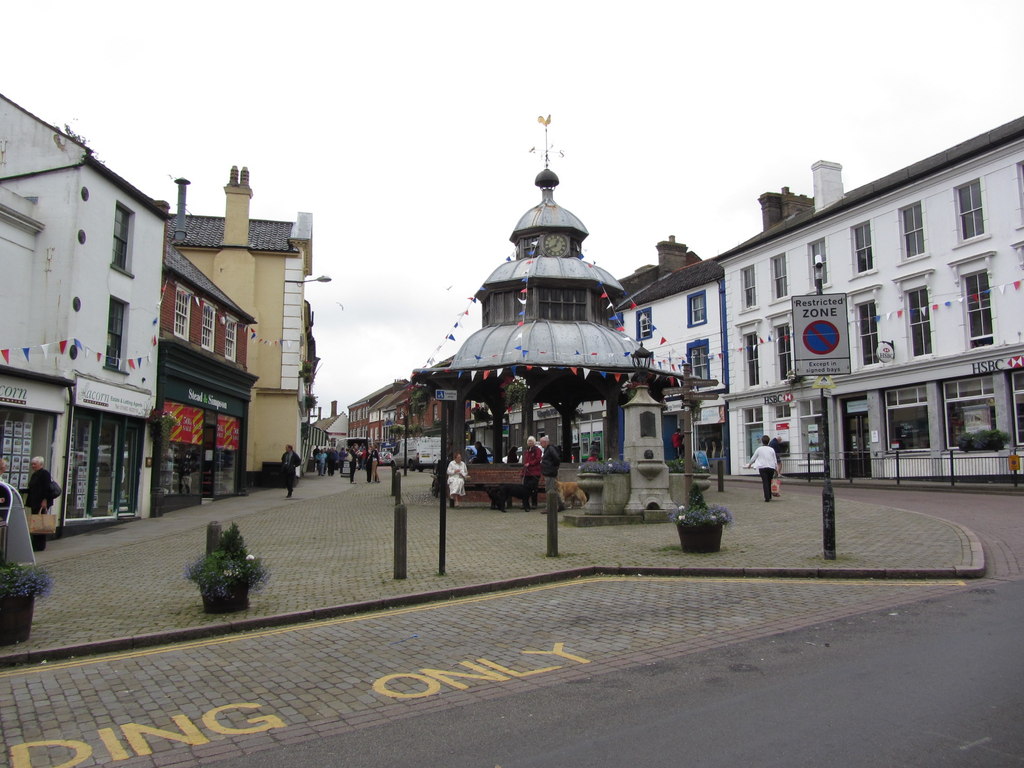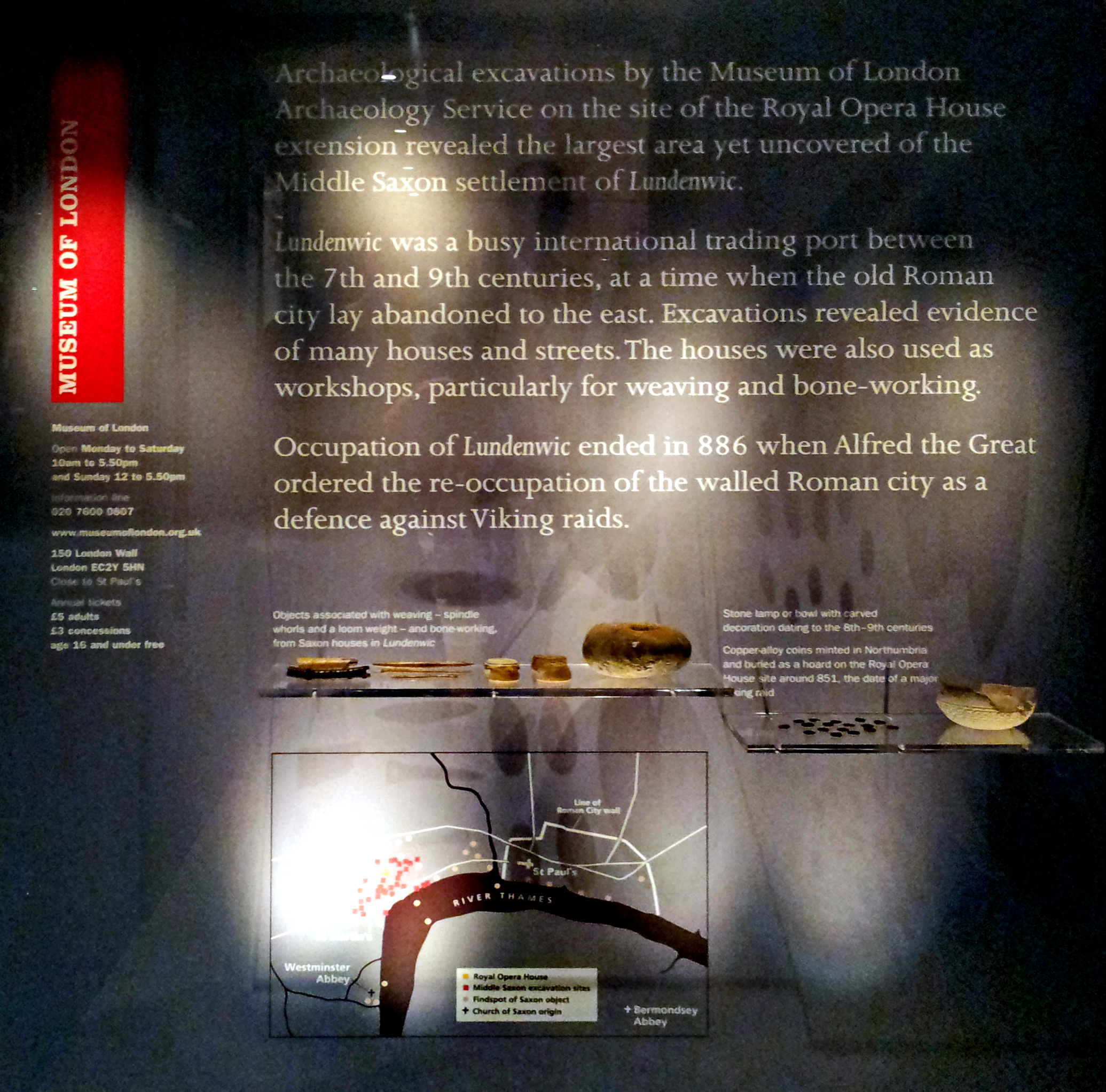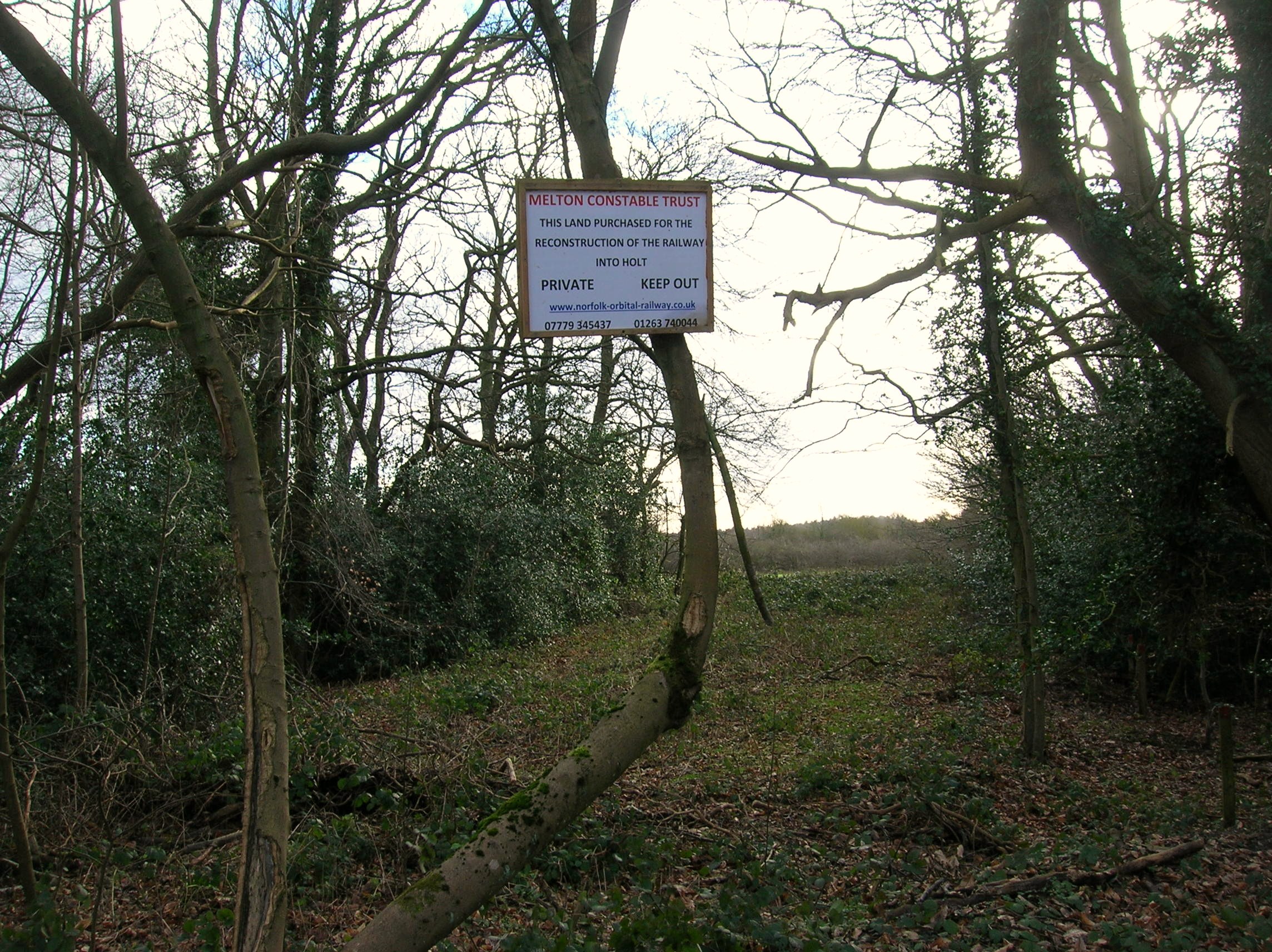|
Great Ryburgh
Great Ryburgh is a village and former civil parish, now in the parish of Ryburgh, in the North Norfolk district, in the county of Norfolk, England. In 1961 the parish had a population of 484. On 1 April 1987 the parish was abolished and merged with Little Ryburgh to form "Ryburgh". The villages name means 'Rye town'. It is located about two miles south-east of the market town of Fakenham. The River Wensum flows through the village. The village has a large maltings which has been producing malt on a traditional malting floor for two centuries. The village and maltings were formerly served by Ryburgh station on the Great Eastern Railway branch from Wymondham and East Dereham to Fakenham and Wells-next-the-Sea. This line is proposed for restoration, as far as Fakenham, by the Norfolk Orbital Railway. The church of Great Ryburgh St. Andrew is one of 124 surviving round-tower churches in Norfolk.The Boar Innis located in Great Ryburgh and is a traditional English country inn, with ... [...More Info...] [...Related Items...] OR: [Wikipedia] [Google] [Baidu] |
North Norfolk
North Norfolk is a local government district in Norfolk, England. Its council is based in Cromer. The population at the 2011 Census was 101,149. History The district was formed on 1 April 1974, under the Local Government Act 1972. It was a merger of Cromer Urban District, North Walsham Urban District, Sheringham Urban District, Wells-next-the-Sea Urban District, Erpingham Rural District, Smallburgh Rural District, and Walsingham Rural District. The district was originally to be called Pastonacres, but changed its name by resolution of the council and permission of the Secretary of State for Environment before it formally came into existence on 1 April 1974. Politics Elections to the district council are held every four years, with all of the seats on the council up for election every fourth year. The council was run by a Conservative administration, the Conservative party having gained a majority of 8 seats at the 2011 elections, which they increased to 18 at the 20 ... [...More Info...] [...Related Items...] OR: [Wikipedia] [Google] [Baidu] |
Great Eastern Railway
The Great Eastern Railway (GER) was a pre-grouping British railway company, whose main line linked London Liverpool Street to Norwich and which had other lines through East Anglia. The company was grouped into the London and North Eastern Railway in 1923. Formed in 1862 after the amalgamation of the Eastern Counties Railway and several other smaller railway companies the GER served Cambridge, Chelmsford, Colchester, Great Yarmouth, Ipswich, King's Lynn, Lowestoft, Norwich, Southend-on-Sea (opened by the GER in 1889), and East Anglian seaside resorts such as Hunstanton (whose prosperity was largely a result of the GER's line being built) and Cromer. It also served a suburban area, including Enfield, Chingford, Loughton and Ilford. This suburban network was, in the early 20th century, the busiest steam-hauled commuter system in the world. The majority of the Great Eastern's locomotives and rolling stock were built at Stratford Works, part of which was on the site of to ... [...More Info...] [...Related Items...] OR: [Wikipedia] [Google] [Baidu] |
Villages In Norfolk
A village is a clustered human settlement or community, larger than a hamlet but smaller than a town (although the word is often used to describe both hamlets and smaller towns), with a population typically ranging from a few hundred to a few thousand. Though villages are often located in rural areas, the term urban village is also applied to certain urban neighborhoods. Villages are normally permanent, with fixed dwellings; however, transient villages can occur. Further, the dwellings of a village are fairly close to one another, not scattered broadly over the landscape, as a dispersed settlement. In the past, villages were a usual form of community for societies that practice subsistence agriculture, and also for some non-agricultural societies. In Great Britain, a hamlet earned the right to be called a village when it built a church. [...More Info...] [...Related Items...] OR: [Wikipedia] [Google] [Baidu] |
Historic England
Historic England (officially the Historic Buildings and Monuments Commission for England) is an executive non-departmental public body of the British Government sponsored by the Department for Digital, Culture, Media and Sport. It is tasked with protecting the historic environment of England by preserving and listing historic buildings, scheduling ancient monuments, registering historic Parks and Gardens and by advising central and local government. The body was officially created by the National Heritage Act 1983, and operated from April 1984 to April 2015 under the name of English Heritage. In 2015, following the changes to English Heritage's structure that moved the protection of the National Heritage Collection into the voluntary sector in the English Heritage Trust, the body that remained was rebranded as Historic England. The body also inherited the Historic England Archive from the old English Heritage, and projects linked to the archive such as Britain from Above, w ... [...More Info...] [...Related Items...] OR: [Wikipedia] [Google] [Baidu] |
Museum Of London Archaeology
MOLA (Museum of London Archaeology) is an archaeology and built heritage practice and independent charitable company registered with the Chartered Institute for Archaeologists (CIfA), providing a wide range of professional archaeological services to clients in London and across the country. It is one of the largest archaeological service providers in the UK, and is the only one with IRO (Independent Research Organisation) status. MOLA’s operations were historically focused within Greater London but are increasingly nationwide. It employs over 300 staff across 4 locations: the central London headquarters, and further offices in Northampton, Basingstoke, and Birmingham. MOLA is a registered charity (since 2011) with its own academic research strategy and extensive community engagement and education programmes including the Thames Discovery Programme, CITiZAN and the Time Truck. Commercial services offered include expertise and advice at all stages of development from pre-plan ... [...More Info...] [...Related Items...] OR: [Wikipedia] [Google] [Baidu] |
Anglo-Saxons
The Anglo-Saxons were a Cultural identity, cultural group who inhabited England in the Early Middle Ages. They traced their origins to settlers who came to Britain from mainland Europe in the 5th century. However, the ethnogenesis of the Anglo-Saxons happened within Britain, and the identity was not merely imported. Anglo-Saxon identity arose from interaction between incoming groups from several Germanic peoples, Germanic tribes, both amongst themselves, and with Celtic Britons, indigenous Britons. Many of the natives, over time, adopted Anglo-Saxon culture and language and were assimilated. The Anglo-Saxons established the concept, and the Kingdom of England, Kingdom, of England, and though the modern English language owes somewhat less than 26% of its words to their language, this includes the vast majority of words used in everyday speech. Historically, the Anglo-Saxon period denotes the period in Britain between about 450 and 1066, after Anglo-Saxon settlement of Britain, th ... [...More Info...] [...Related Items...] OR: [Wikipedia] [Google] [Baidu] |
Round-tower Church
Round-tower churches are a type of church found mainly in England, mostly in East Anglia; of about 185 surviving examples in the country, 124 are in Norfolk, 38 in Suffolk, six in Essex, three in Sussex and two each in Cambridgeshire and Berkshire. There is evidence of about 20 round-tower churches in Germany, of similar design and construction to those in East Anglia. Countries with at least one round-tower church include Andorra, the Czech Republic, Denmark, France, Italy, Sweden, Norway, Poland and South Africa. There is no consensus between experts for why the distribution of round-tower churches in England is concentrated in the East of England: *Round-tower churches are found in areas lacking normal building stone, and are therefore built of knapped flint. Corners are difficult to construct in flint, hence the thick, round walls of the towers. *The churches are found in areas subject to raids from, for example, the Vikings, and were built as defensive structures, churche ... [...More Info...] [...Related Items...] OR: [Wikipedia] [Google] [Baidu] |
Norfolk Orbital Railway
The Norfolk Orbital Railway — as the Holt, Melton Constable and Fakenham Railway Company — is a proposed rail project in Norfolk, England, which is proposed to look at bringing a new rail connection to North and Mid Norfolk. The proposed line would link stations at Sheringham and Wymondham on the national rail network by using tracks of the two standard gauge heritage railways in the county, and restoring the former Midland and Great Northern Joint Railway line between Holt and Fakenham, creating a circular route that could be used by passenger services. The heritage lines affected are Mid-Norfolk Railway and the North Norfolk Railway, with the route including stations on both of these lines as well as on part of National Rail network and on a disused section between County School and Holt. These are both 2 entirely separate enterprises. History The line from Fakenham to Melton Constable was built by the Lynn and Fakenham Railway, later the Midland and Great Northern ... [...More Info...] [...Related Items...] OR: [Wikipedia] [Google] [Baidu] |
Wells-next-the-Sea
Wells-next-the-Sea is a port town on the north coast of Norfolk, England. The civil parish has an area of and in 2001 had a population of 2,451,Office for National Statistics & Norfolk County Council (2001). Census population and household counts for unparished urban areas and all parishes''. Retrieved 2 December 2005. reducing to 2,165 at the 2011 census. Wells is to the east of the resort of Hunstanton, 20 miles (32 km) to the west of Cromer, and 10 miles (16 km) north of Fakenham. The city of Norwich lies 32 miles (51 km) to the south-east. Nearby villages include Blakeney, Burnham Market, Burnham Thorpe, Holkham and Walsingham.Ordnance Survey (2002). ''OS Explorer Map 251 – Norfolk Coast Central''. . Origin of name The name is ''Guella'' in the Domesday Book of 1086 (half gallicised, half Latinised from Anglian ''Wella'', a spring). This derives from spring wells of which Wells used to have many, rising through the chalk of the area. T ... [...More Info...] [...Related Items...] OR: [Wikipedia] [Google] [Baidu] |
East Dereham
Dereham (), also known as East Dereham, is a town and civil parish in the Breckland District of the English county of Norfolk. It is situated on the A47 road, about 15 miles (25 km) west of the city of Norwich and 25 miles (40 km) east of King's Lynn. The civil parish has an area of and, in the 2001 census, had a population of 15,659 in 6,941 households; the population at the 2011 census increased to 18,609. Dereham falls within, and is the centre of administration for, Breckland District Council.Office for National Statistics & Norfolk County Council (2001). Census population and household counts for unparished urban areas and all parishes'. Retrieved 2 December 2005. The town should not be confused with the Norfolk village of West Dereham, which lies about 25 miles (40 km) away. Since 1983, Dereham has been twinned with the town of Rüthen in North Rhine-Westphalia, Germany. It is also twinned with Caudebec-lès-Elbeuf, France. In spite of t ... [...More Info...] [...Related Items...] OR: [Wikipedia] [Google] [Baidu] |
Wymondham
Wymondham ( ) is a market town and civil parishes in England, civil parish in the South Norfolk district of Norfolk, England, south-west of Norwich, England, Norwich off the A11 road (England), A11 road to London. The River Tiffey runs through. The parish, one of Norfolk's largest, includes rural areas to the north and south, with hamlets of Suton, Silfield, Spooner Row and Wattlefield. It had a population of 14,405 in 2011, of whom 13,587 lived in the town itself. Development The community developed during the Anglo-Saxon settlement of Britain, Anglo-Saxon period and expanded with the establishment of a Wymondham Abbey, priory in 1107 and a market in 1204. Industrially, Wymondham became known as a centre of woodturning and brush-making, retaining its brush factories until the late 20th century. New housing to the north and east of the town centre brought rapid expansion. Dual carriageways for the A11 and the development of rapid rail links to Norwich and Cambridge means Wymon ... [...More Info...] [...Related Items...] OR: [Wikipedia] [Google] [Baidu] |
Ryburgh Railway Station
Ryburgh railway station was a railway station in the village of Great Ryburgh in the English county of Norfolk. History The station opened in 1857, when the line between Dereham and Wells opened as part of the Norfolk Railway. The entire line, between Wymondham and Wells, became part of the Great Eastern Railway in 1862. The passenger service between Dereham and Wells ended on 5 October 1964, Tuddenham, 1965, page 87 although the line remained open for goods trains as far as Fakenham. The closure of the station was discussed in the House of Lords on 22 June 1964, with Lord Wise asking Lord Chesham what the government intended to do to address the tonnage of grain that the closure would put onto local roads. 1978 saw the formation of the Fakenham and Dereham Railway Society, a forerunner of the Mid-Norfolk Railway, which hoped to preserve the line between these two towns. A charter train ran as far as Fakenham in 1979, but the section of line between Ryburgh and Fakenh ... [...More Info...] [...Related Items...] OR: [Wikipedia] [Google] [Baidu] |










